2 The Visual Language of Memorials and Monuments
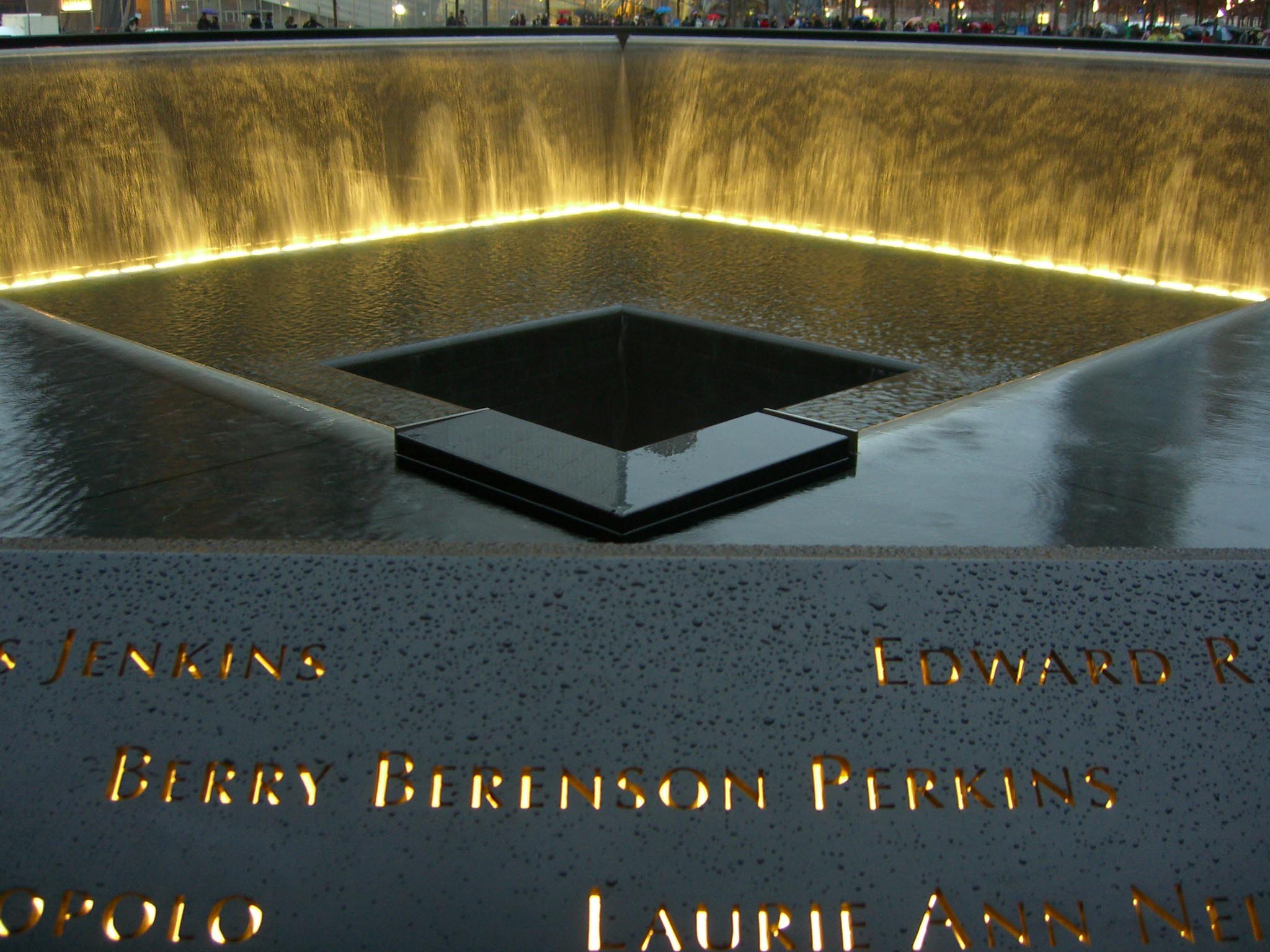
Introduction
Memorials and monuments can take a variety of forms such as the ones featured in Chapter 1 dedicated to military personnel. These are probably the memorials and monuments that most people encounter. However, memorials can also be temporary as well as more permanent and are important in helping individuals and communities to heal after sudden and often traumatic events such as the September 11 2001 attacks in New York City or the 1993 World Trade Center bombing.
You may have encountered a temporary roadside memorial at the site of a recent fatality. Often symbols such as flowers are evident and sometimes messages and dates will be included. These types of memorials are often fairly easy to understand as they utilise readily understood symbols or other visual elements such as colour to communicate a message. For example, Figure 2.2 depicts a ‘ghost bike’ in Berlin. The use of a bike painted white symbolically represents a cycling fatality. The translation reads ‘Cyclist, 66 years, 30 August 2008’. These sorts of memorials are a reminder of the deceased but also act as a warning to other road users.
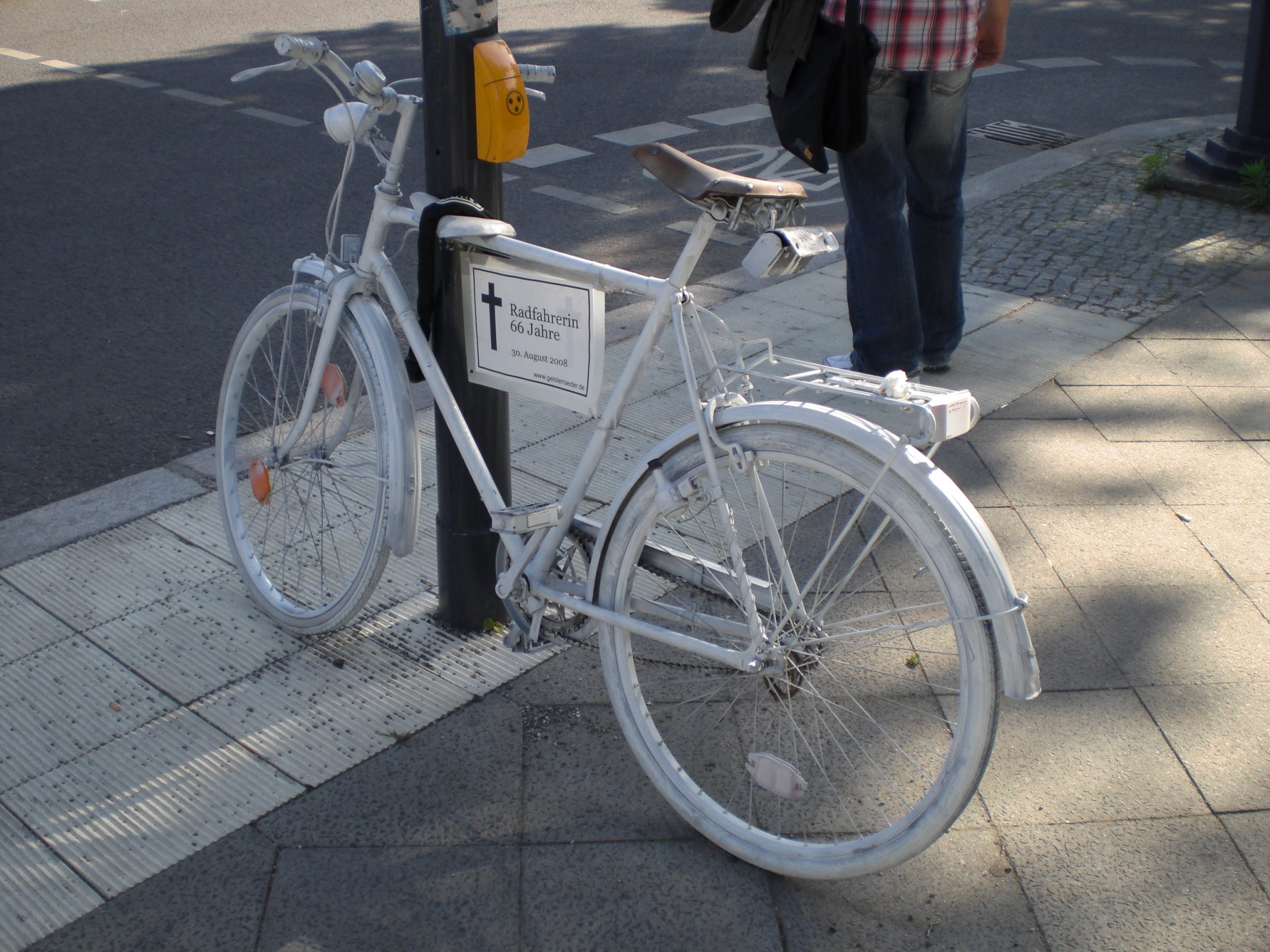
Sometimes temporary memorials are replaced with permanent memorials. An example of this is The Cenotaph in Whitehall, United Kingdom, which was originally constructed from wood and painted white in 1919. However, it was so popular with the public that it was replaced the following year with the stone memorial that stands today. A contemporary memorial that was deliberately designed to be impermanent was the Mud Soldier sculpted by Dutch artist Damian van der Velden (Figure 2.3). She wanted her memorial to war ‘to reflect the horrors and sacrifices faced by soldiers on the mud-soaked battle of Passchendaele’ (Mann & Douglas, 2017, para. 1). The Mud Soldier was sited in London’s Trafalgar Square to commemorate the 100th anniversary of the 1917 Battle of Passchendaele. The sculpture is made from mud and sand which the artist and her sister collected from Flanders Fields in Passchendaele, Belgium where approximately 275,000 soldiers died. The artist described how the First World War solider is hunched over and slowly eroding in the rain: ‘all his energy is gone’ (Mann & Douglas, 2017, para. 5). During the time it was exhibited a sprinkler system was used to continue the effect if the sun was shining.
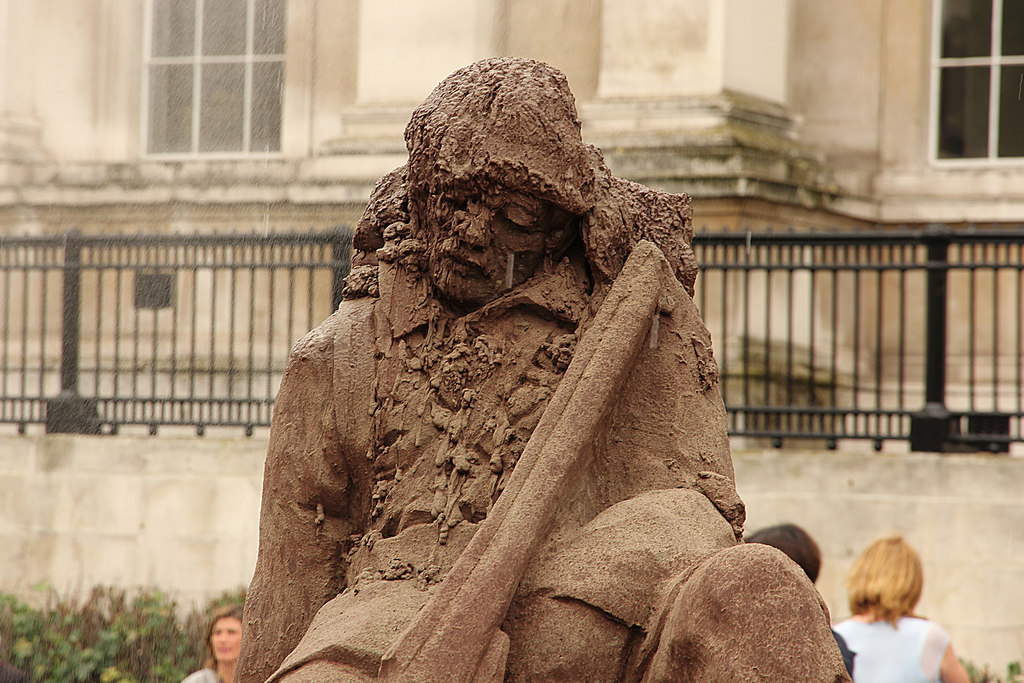
You can find out more about this sculpture and the context of the Battle of Passchendaele that it memorialises by watching this video:
Video 2.1: Mud soldier sculpture in Trafalgar Square
Technology has also enabled people to commemorate and to communicate their grief through online memorials. These types of memorials may be a simple webpage, an extensive information source or part of a social media platform. They started to appear on the internet in the late nineties, usually to commemorate people who had been in the public eye. Other sites such as Find a Grave, which is owned by Ancestry.com enabled members of the public to search and add to this online database of cemetery records. With the development of social media platforms and user-friendly web creation software the number of online memorials has increased rapidly.
Digital Memorials in New Zealand, for example, enables people to include a QR barcode on a headstone, plaque or memorial which when scanned provides a link to a webpage that contains information and images about the deceased person (Jeffs, 2018). There is a similar initiative operating in some Australian cemeteries through bluetooth technology (Sutton, 2021).
The global COVID-19 Memorial has been created to commemorate people who have lost their lives during the pandemic. It is an interactive memorial that in addition to emphasising the people behind the statistics, also graphically shows how many people around the world have died within the last 24 hours.
The 9/11 Memorial Museum is an interactive video experience which enables viewers to select different paths during their tour of the memorial. The memorial commemorates the victims of the 9/11 and 1993 attacks, honours the courage of the first responders and helps to educate the public about the attacks and their aftermath. A number of online resources are also included as part of the memorial.
These types of memorials enable a global response to events and can allow people to grieve despite their geographic location and time of day. They can also be organic, with some providing opportunities for people to post comments on significant anniversaries and help family members and relatives to see that person is still remembered by others. Unlike more permanent memorials, online memorials also have little environmental impact.
The visual language of memorials and monuments
Traditional memorials and monuments – particularly those which memorialise wartime events – often use Classical features and Christian symbolism. The artists and sculptors who designed war memorials often included symbols that were important to the community who had commissioned the war memorial. These symbols would represent events, emotions and ideas and would have been understood by people at that time. Some examples include:
- urns: symbolising the ancient Greek custom of cremation and the funerary vessels in which ashes were stored
- wreaths: traditional symbol of commemoration, often shown as laurel leaves, which are a symbol of victory
- broken columns: representing lives cut short
- funeral shrouds: signifying death and mourning
- obelisks: which come from ancient Egyptian sun worship and represent shafts of the sun’s rays
- winged angel: representing victory
- triumphal arch: which originated from triumphal monuments of imperial Rome
- eagle: representing victory and American prowess
- lion: symbolising the might of the British empire
- globe: signifying the world and the universality of humankind
- orb and cross: representing Christianity
- Christian cross: representing the ultimate symbol of salvation and sacrifice
- eternal light: represented by flames, lamps, torches and signifying remembrance and purification
- water: signifying regeneration and cleansing
- sword: reflects the military aspect of the memorial
- flags: representing various countries and patriotism, with crossed flags representing relationships between the countries
(McKay, 2014)
Many of the traditional First World War memorials in Australia that include soldiers’ names lack any markings or rank – hence as Judith McKay (2014, para. 7) reveals, ‘they conform to Australian egalitarian ideals’. It is important therefore to consider the context of the time when ‘reading’ war memorials and monuments.
The poppy and the native desert pea: Symbols of remembrance
Interestingly, although the poppy is used on Remembrance Day and Anzac Day, it was not introduced as a symbol until 1921, after the First World War (see Figure 2.4). This explains why these memorials do not include this symbol. In Australia the native desert pea (or Sturt desert pea named after explorer Charles Sturt) is a flower of mourning for some First Nations groups and grows in the most arid of areas (See Figure 2.5). Hazel Davies, a florist with permission from traditional owners, explains that the desert pea represents the blood spilt on the land for some First Nations peoples. The desert pea represents both love and loss (Thorpe, 2018). She explains that florists are ‘symbologists’ who spend a lot of time working with stories. For many Aboriginal groups the desert pea is a battle-ground flower and has ‘an almost identical story to the Flanders poppy’ (Heathcote, 2018, para. 6).
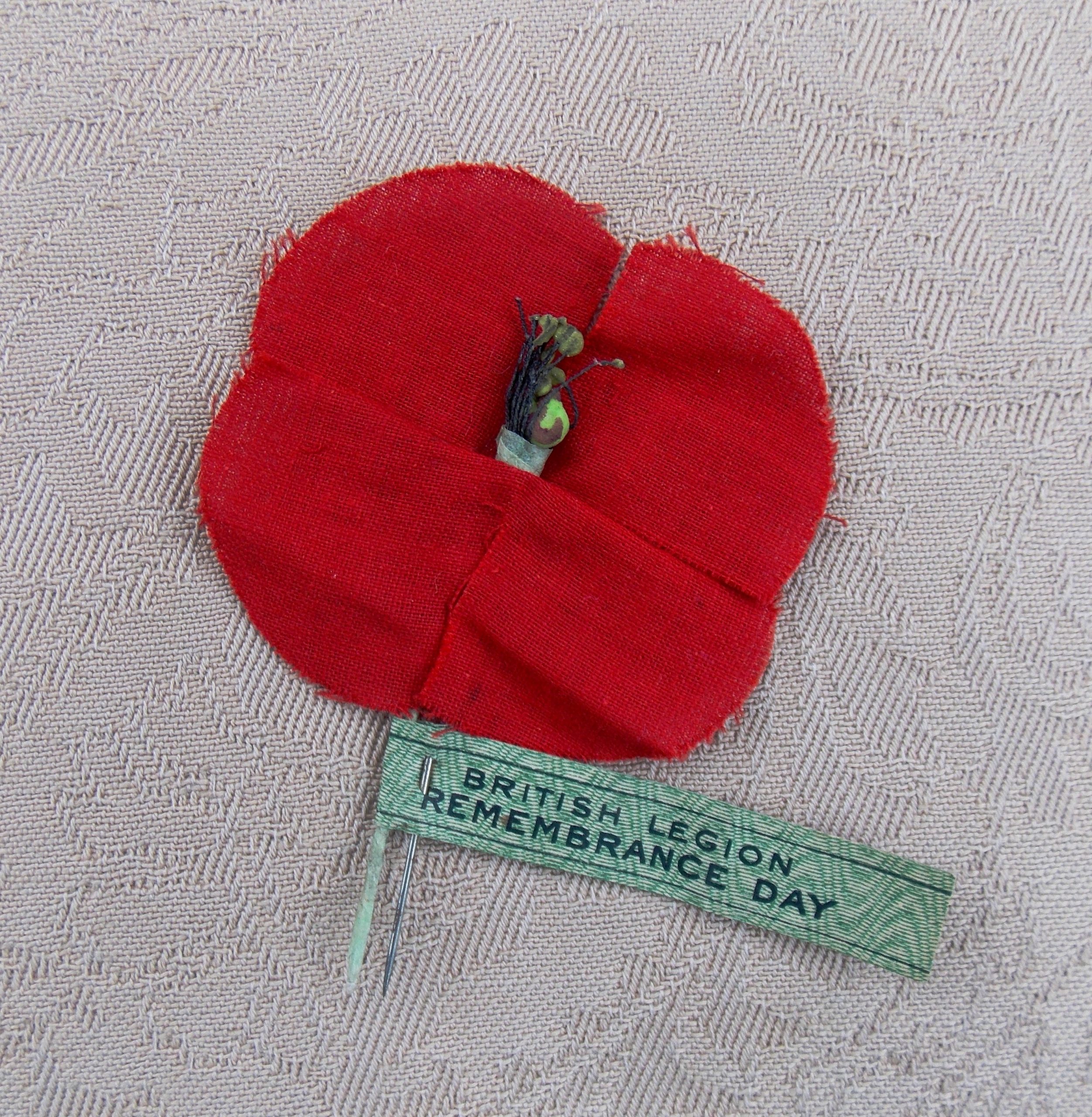
Cotton and silk poppies were made in devastated areas of France by widows and orphans organised by Madame Guérin, ‘The Poppy Lady of France’ and the originator of Poppy Day.
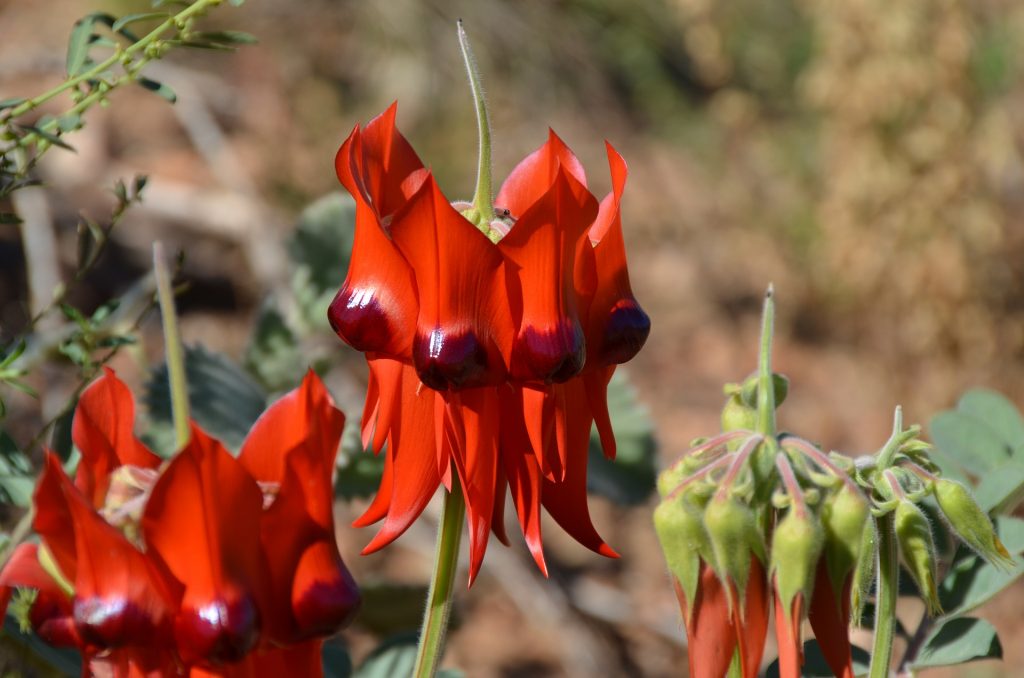
Understanding the changing visual language of memorials and monuments
Contemporary memorials and monuments have moved away from including much of the symbolism evident in traditional memorials and monuments. There are a range of reasons for this including the ethnic diversity of communities, a greater understanding of individual experiences of war, and shifting notions of nationhood. As Abousnouga and Machin state:
‘Some of these monuments still draw on Classical features and Christian symbolism. But there is a shift to abstraction and other kinds of symbolism to do with reified ethnic identities, heritage and even sport in order to communicate national identities. While the idea of soldiery as sacrifice and serving the nation is still apparent soldiers are now much more humanized and representations have shifted in some instances away from the power and might of the state represented through massive Classical structures, but through more organic and informal references. And perhaps as war itself has become less easy to understand and represent through older discourses and as it can no longer simply be justified through the call of the nation and its place in the world, so representations have shifted to the more complexly symbolic, even mystical, and abstract. And war and nation have merged with other banal symbols of nationhood such as sport and reified ethnic identities’ (Abousnnouga & Machin, 2013, p. 215.).
Belletani and Panico (2016, p. 36) propose that the visual and political dimensions of memorials and monuments ‘always function together and influence each other through continuous mediations’. They have drawn from various sources to compile the following list of categories to assist in analysing the material level of monuments. These include:
- Dimensions: large/small, wide/narrow, tall/short
- Location: degree of elevation, distance/proximity, angle of interaction
- Materials of construction: solidity/hollowness, texture of the surface
- Topological organisation: form, shape
- Eidetic organisation: regularity/irregularity, curvature
- Chromatic organisation: colours, brightness/opacity, lighting
(Belletani & Panico, 2016, p. 36)
Hay et al. (2014, p. 204) contend that memorials and monuments ‘are political constructions…drawing popular attention to specific events and people and…obscuring others’. However, as Belletani and Panico (2016, pp. 33-34) argue, the meaning of monuments is not fixed and ‘users may interpret monuments following their own opinions, beliefs, feelings and emotions’. In this context Belletani and Panico (2016, p. 33) contend that the meaning of monuments can be divided into four interrelated functions:
- Cognitive function: refers to the kind of human knowledge monuments embody as well as the knowledge users have about the representations of monuments
- Axiological function: considers whether uses value this knowledge positively or negatively
- Emotional function: investigates which emotions and feelings monuments elicit
- Pragmatic function: concerns the practices of users within the space of monuments
Even though memorial and monument design has changed, it is generally agreed that whether they are traditional or contemporary they should include a sensory and emotional aspect. In fact, as Sci (2009, p. 43) argues, the continuing relevance and potential of memorials and monuments is dependant on their ability to engage a viewer in a process that is ‘both cognitively stimulating and affectively touching’ (Sci, 2009, p. 43).
A memorial or monument therefore needs to create a situation that affects the senses and emotions, prompting the viewer to experience an affective response that is ‘a real-time somatic experience’ of memory (Bennett, 2005, p. 3). This is common to many contemporary memorials that have been informed by the success of the Vietnam Veteran’s Memorial in Washington, DC. They engage viewers mentally and sensually and seek to affect change by inviting the viewer to think rather than dictating what to think. They engage visitors in critical reflection about their own values as the memorials do not offer easily understood ‘political ideological or cultural messages’ (Sci, 2009, p. 45). Mitchell (2003, p. 453) states that the resistance or transformation of ‘dominant forms of memory production’ is easier when a city in which these forms are located are ‘in a state of upheaval and flux.’ This is not generally an issue for Australian cities, unlike places such as Berlin which Mitchell (2003) describes as the ultimate urban palimpsest: a ‘city text frantically being written and rewritten’ (Huyssen, 2003, p. 49).
Mitchell (2016, para. 1) describes how Berlin’s urban landscape has seen an increasing number of monuments and memorials dedicated to the Holocaust. In terms of their visual design, she argues they are ‘often puzzingly mundane or even inescapably ugly’. She explains that an aesthetic style that can memorialise such an unspeakable moment in time had to be neither reductive nor sentimental:
‘Artists have also had to grapple with deeper moral qualms about aestheticizing the unspeakable suffering of Holocaust victims …’ (Mitchell, 2016, para. 2). This has lead to a ‘moral aversion towards the use of traditional monumental forms’ (Mitchell, 2016, para. 2).
The creation of ‘affective monuments’ has been a response by artists to the issues in memorialising the Holocaust. These types of monuments induce a emotional response in individuals and forge a ‘more private, personal connection to the past’ (Mitchell, 2016, para. 3). Another approach that artists have used is ‘negative form’ which is structured around the idea of empty space and often consists of inverted forms. ‘A gesture of respect for those who are not here to speak for themselves’ (Mitchell, 2016, para. 6). Examples of these affective memorials include the Aschrott Fountain (1985) in Kassel, Germany’s City Hall Square and the Judenplatz Holocaust Memorial (2000) in Vienna, Austria. These types of memorials and monuments are also called ‘counter memorials’ or ‘counter monuments’ because they give voice to the people who would have not had their voices heard previously, or whose voices have been deliberately removed. These types of memorials are usually set into the ground, become part of the landscape and provide space for the viewer to interpret as opposed to traditional memorials which are usually set above the landscape and often provide a dominant historical narrative (See Figure 2.6).

In contemporary memorial and monument design it appears that the more contentious the event that is celebrated, the more abstract and symbolic the memorial or monument becomes. This can leave the viewer unable to understand and ‘read’ either the purpose for this commemorative site or the visual symbols and aesthetic devices that have been chosen. Young (1999, para. 5) identified the profound impact on monuments and memorials wrought by aesthetic and political revolutions and the world wars. Heroic self-aggrandising figurative icons that celebrated the nation state and its triumphs dominated the commemorative landscape of the late nineteenth century. In contrast, contemporary memorials and monuments are antiheroic, ironic, and self-effacing, and are clearly shaped by the ideological ambivalence and uncertainty typical of late twentieth century postmodernism.
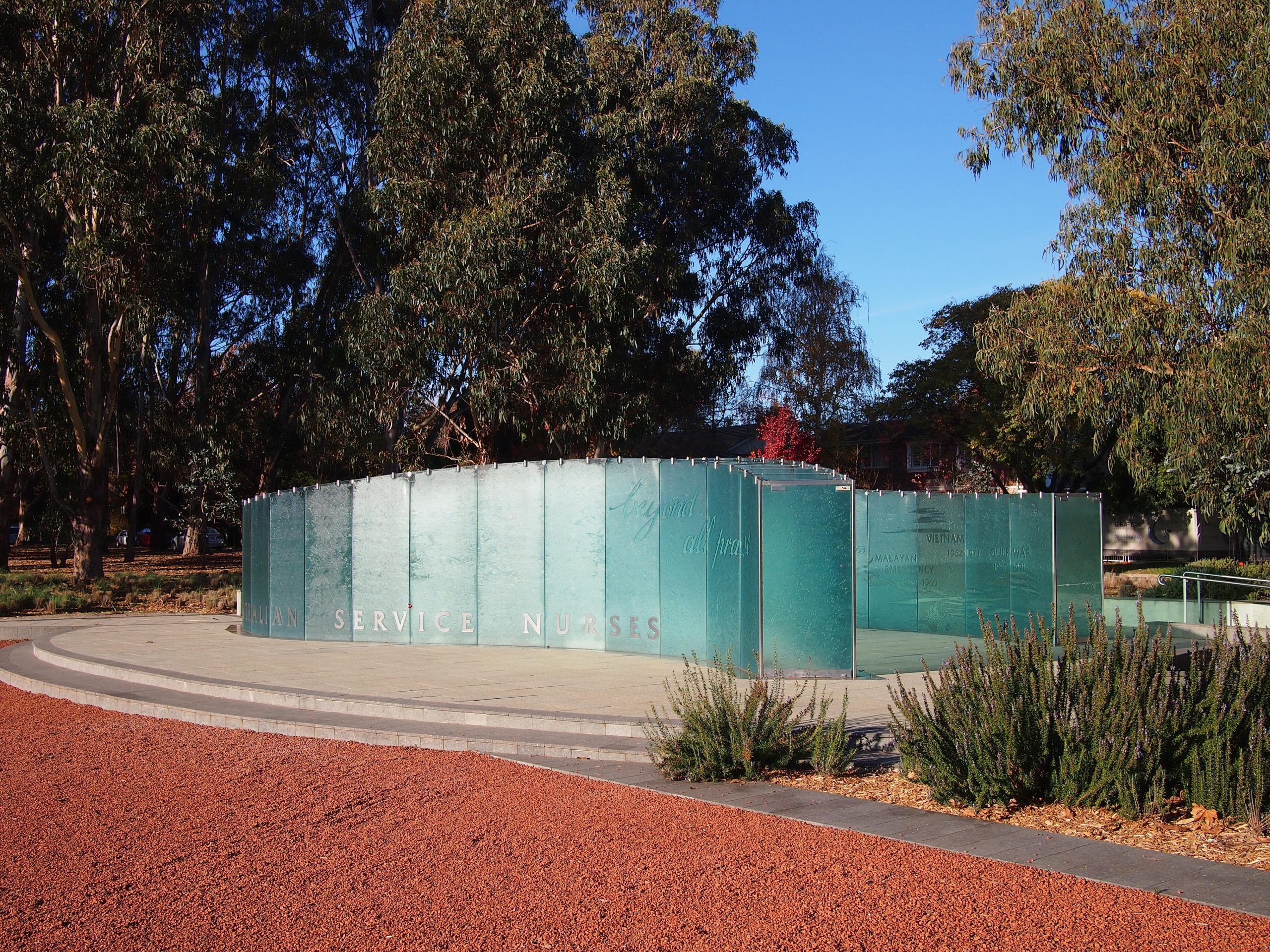
The Australian Service Nurses National Memorial (Figure 2.7) honours past and present nurses of the Australian Defence Force, serving in the Royal Australian Navy, Australian Army and Royal Australian Air Force and associated services. It was unveiled on October 2 1999.
This memorial is made predominately of cast glass which form two sets of wavy lines. Etched and cast into the glass is text and images which portray a timeline of the contribution made by Australian nurses in the armed services. The memorial also incorporates pictures and diary entries, which emulate the original handwriting, cast into the glass. Some of the panels are blank which symbolises the continuing service of this group whose history has not finished. The glass walls are interlocked to symbolise nurturing hands. There is also a contemplative area linked to the memorial which is surrounded with rosemary for remembrance and includes a reflective pool fountain and the symbols of the armed forces. A nurse who was present at the unveiling of the memorial remarked that:
‘… the Memorial seemed in marked contrast to the other more masculine memorials on Anzac Parade. One enters the memorial on the north side from a slight ramp. The curved lines of the panels lead one through to a contemplative space at the southern end where is a low waterfall and sunken garden … As we walked through, cast into the back panels was a scenic collage depicting the zones where nursing service was given. Overprinting named these places so well known to us, for example, Gallipoli, Salonika, Singapore, Banka Island, New Guinea and Rabaul … cast into the inside front panels were nurses depicted from the Boer War onwards in their uniforms of the day with hand written extracts from the personal and poignant accounts of nurses etched into the glass. The front panel facing Anzac Parade simply says “Beyond all Praise”‘ (Johnson, 1999, paras. 3-4).
The unusual use of glass and the curved forms of the memorial were deliberate choices made by the artist and designers. They felt these qualities emulated feminine qualities which honoured the Australian Service Nurses. The glass also allows the viewer to become part of the memorial and to see various aspects of the text, including the history of Australian Service Nurses from different perspectives as they walk through the memorial. The memorial is also sited into the landscape and uses natural elements such as water and rosemary to link the memorial to the environment it is sited in. The viewer can also bring their own perspectives to the memorial based on their sociocultural and political position. The memorial allows the viewer the space to relate to interpret its meaning.
Without an understanding of the visual elements or the inherent meaning of non-traditional memorials and monuments can struggle to operate at either a literal or artistic level. It is important to also consider the impact of artists, designers, committees, the sociocultural political context and the use of materials in the creation of a memorial and monument. Importantly, the viewer also brings their own perceptions, personal background and history, and sociocultural and political context to their ‘reading’ of a memorial or monument (see Figure 2.8).

Visual analysis: Sydney Gay and Lesbian Holocaust Memorial (2001)
The following section provides a general approach to analysing a memorial or monument. When analysing a memorial or monument, there are a number of elements to consider including: Subject, Form, Site and Visitor Experience. The following section provides a visual analysis of the Sydney Gay and Lesbian Holocaust Memorial (Figure 2.9) which is sited in Sydney, Australia.
The memorial was built to honour all gay people who have been murdered, tortured and persecuted because of their sexuality. It is sited at Green Park in the Sydney suburb of Darlinghurst. Green Park is adjacent to the Sydney Jewish Museum, which ensures that the memorial retains its historic meaning.
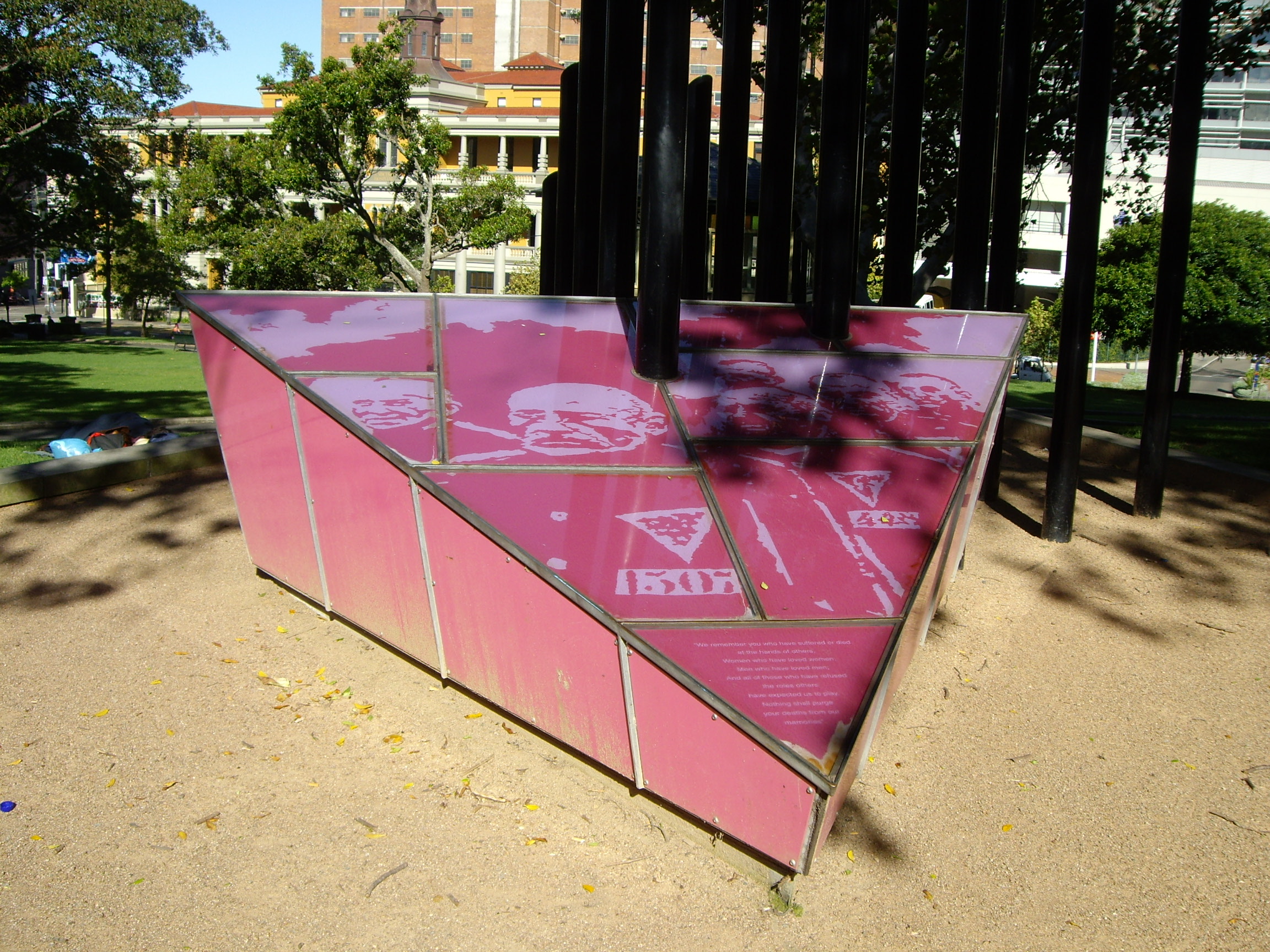
The memorial was built to honour all gay people who have been murdered, tortured and persecuted because of their sexuality. It is site at Green Park in Darlinghurst, in Sydney Australia. Green Park is adjacent to the Sydney Jewish Museum, which ensures that the memorial retains its historic meaning.
Subject
The Holocaust refers to the attempted genocide of European Jews during the Second World War. Six million Jews – two thirds of the Jewish population of Europe – were murdered by the Nazis and their collaborators. Other groups were targeted, though not quite as systematically as the Jews, including gay men and to a lesser extent lesbians. In all, the Nazis arrested around 100,000 gay people and imprisoned about 50,000. Though most served their sentence in regular prisons, between 5,000 and 15,000 were sent to concentration camps, where perhaps sixty per cent died.
Form
The memorial is comprised of a pink triangular glass prism symbolic of the ones worn in concentration camps to identify and humiliate gay men. According to a pamphlet held in the Australian Lesbian and Gay Archives announcing the formation of the committee, it is now considered by some as a ‘symbol of gay pride’ (Gay and Lesbian Holocaust Memorial Project, 1991b). The black triangle used to identify lesbians is present in the form of a triangular grid of black steel columns intersecting the prism. Together, the two triangles take the form of a fractured Star of David. The black columns are sentinels intended to symbolise individual resilience and strength. The designers, Russell Rodrigo and Jennifer Gamble, did not embrace abstraction to the extent that someone like Peter Eisenman, the designer of the Memorial to the Murdered Jews of Europe in Berlin, did. Rodrigo (2009, p. 11) argued that ‘some form of figuration is required in order for an empathic link to be evoked in the memorial participant, for projection and identification to take place’. Effective memorial design, in Rodrigo’s view, requires a balance between ‘abstraction and figuration, between ambiguity and specificity’. The Sydney Gay and Lesbian Holocaust Memorial is a counter memorial in terms of subject matter in a manner far more confident than it is in terms of form.
Site
The memorial is situated in Stonewall Gardens in Darlinghurst, Sydney. The name celebrates a connection with the Stonewall Riots in Greenwich Village in New York in June 1968 which are widely considered a watershed in the gay liberation movement. It also positions the memorial in the context of both Holocaust commemoration and gay liberation. In addition, Darlinghurst was at the time the heart of Sydney’s gay and lesbian population, having been the site of demonstrations, public meetings, Gay Fair Days, and the starting point for the AIDS Memorial Candlelight Rally. It is also very close to the Sydney Jewish Museum.
Historical context
It is important to remember that memorials are often constructed sometime after the event they commemorate. They usually reflect the attitudes of the generation constructing them rather than being ‘true’ to the historical event or person. For example, memorials to the Confederacy in the United States offer an insight into how one generation can pursue its own agenda by appealing to history.
Eleven states joined the Confederacy at the start of the American Civil War but there are memorials spread over 31 states and the District of Columbia. The war finished in 1865 but the majority of the memorials were constructed between the 1890s and 1950s, with the biggest spike being between 1900 and the 1920s. Early memorials were to dead soldiers and were usually placed in cemeteries, but later examples were often statues to Confederate heroes placed in public spaces such as city squares. When Georgia redesigned its state flag in 1956 to include the Confederate battle flag and South Carolina flew it from its capitol building from 1962 onward, it tells us more about those states’ response to the Civil Rights movement than it does the ‘facts’ of a century old war.
Likewise, the Sydney Gay and Lesbian Holocaust Memorial tells us as much, if not more, about the concerns of the gay and lesbian community in the years between 1991 and 2001 than it does the attempted genocide of the Jewish people or of the persecution of gay people by the Nazis. For the memorial is not only situated thousands of kilometres away from the main Holocaust sites, but by the time it was completed in 2001 there were few Holocaust survivors still alive and resident in Australia. Yet the ten year effort to have the memorial constructed was an important period for Sydney’s gay and lesbian population. In June 2018 the New South Wales police reviewed 88 deaths between 1976 and 2000 and found that possibly upward of 27 of them were gay hate crimes. The violence reached a ‘bloody crescendo’ in the late eighties and early nineties as the AIDS (Acquired Immunodeficiency Syndrome) epidemic worsened, with upward of 20 assaults each day, most going unreported or uninvestigated. One paper claimed this was the direct result of an ‘unsympathetic’ police and judiciary (Duffin, 2018). The persecution of gay people by the Nazis was thereby positioned by the memorial’s supporters as a ‘commemoration of the oppression of lesbians and gays throughout the world and at any point of time in history’ (Gay & Lesbian Holocaust Memorial Project, 1991).
In addition, by the mid eighties, the AIDs epidemic had gripped the public imagination. At its peak in the early nineties, it was killing 1,000 Australians each year. By the early nineties when the memorial was first discussed, the deaths in New South Wales had reached almost 3,000 (Health Outcomes International & The National Centre in HIV Epidemiology and Clinical Research, 2007). The desire for a Holocaust memorial was, however, well in step with international developments. Beginning at the site of the concentration camp at Mauthausen, Austria in 1984, memorials were later also constructed at Dachau, Neuengamme, Buchenwald and Sachsenhausen in Germany, and Risiera San Sabba in Italy. Cities around the world also followed suit, among them Berlin, Frankfurt am Main and Cologne in Germany; Rome Bologna and Trieste in Italy; Natzweiler-Struthof and Bas-Rhin in France; Amsterdam and Den Haag in the Netherlands; Vienna, Austria; Barcelona, Spain; Laxton, Nottinghamshire in the United Kingdom; Tel Aviv, Israel; Anchorage, San Francisco and Palm Springs in the United States, and Manitoba and Ottawa in Canada. Sydney is the only one of these cities located outside Europe, North America and Israel that has a memorial to the Holocaust. In the Australian context, the local resonance of the Holocaust genocide has not always been readily linked to local issues because of its uncomfortable association with the treatment of First Nations Australians.
Visitor experience/current use
The memorial was initially positioned as a site of resistance and protest rather than commemoration. In one promotional pamphlet, the memorial was characterised as a reminder to ‘lesbians and gays in Sydney not to become complacent – that no matter how open and accepted we feel at the moment, there is always the chance that tomorrow, full scale persecution could start again’ (Gay and Lesbian Holocaust Memorial Project, 1991b). The conflation of historical and contemporary persecution in the same publication, which ranged from Nazi Germany to Russia and the Soviet Union, Colombia, Iran, Peru, Cuba, Angola, Tasmania, and the ‘victims of bashings and murders occurring in Sydney and elsewhere to the present day’ served only to reinforce this message. The tone was intentionally belligerent. The memorial would be a ‘visible and permanent reminder to the heterosexual population that we will not forget those who hide their love in China, those imprisoned in Angola or those who face vilification and loss of work in Tasmania’ (‘Why the triangle’, n.d). Although there were initially some concerns that Sydney’s Jewish community might oppose the memorial, this has not been the case. The Jewish community in Sydney include the memorial during commemorative services on Holocaust Remembrance Day. The memorial was also an important site for delegates at the 25th Jewish LGBT+ World Congress in March 2019. The gay and lesbian communities, which naturally cut across all racial, ethnic, religious, and class boundaries are not as drawn to the memorial, perhaps because of its aesthetic and ideological link to an event that played little or no part in their own identity formation.
Conclusion
This chapter has provided a brief overview of how memorials and monuments have changed over time. At this chapter shows, dominant historical narratives can often obscure or diminish the voices of others. The counter memorial movement has provided an opportunity for memorials and monuments to address past historical injustices and to challenge previous narratives that presented one perspective. In doing this they offer the viewer the opportunity to consider multiple narratives informed by their sociocultural and political context. This chapter has provided considerations for ‘reading’ memorials and monuments and a greater awareness of how to decode their language.
Activity
Questions to prompt discussion:
-
- Create a timeline that includes five memorials or monuments, with the earliest created in the ninetieth century (January 1 1801 – December 31 1900) and the last in the twenty-first century (January 1 2001 – present day). Position them on the timeline by their year of dedication. Consider the first, third and fifth memorials on the timeline and create three columns to compare the three memorials using the framework described above to explore their: Subject, Form, Site and Historical Context.
Name of memorial or monument 1 (Year) Name of memorial or monument 2 (Year) Name of memorial or monument 3 (Year) Subject Form Site Historical Context - Choose one of the three memorials or monuments from the previous question and complete the following template:
Elements Name of memorial or monument (Year) Dimensions: large/small, wide/narrow, tall/short Location: degree of elevation, distance/proximity, angle of interaction Materials of construction: solidity/hollowness, texture of the surface Topological organisation: form, shape Eidetic organisation: regularity/irregularity, curvature Chromatic organisation: colours, brightness/opacity, lighting - When you next encounter a memorial or monument take some time to watch how people interact with it.
– Does the memorial or monument invite people to walk into it or around it?
– How do people react to the memorial or monument?
– Is there any text or signage to assist people with understanding the memorial or monument or is the viewer encouraged to work out the meaning for themselves?
– Engage with the memorial or monument and consider its emotional function. What emotions does this memorial or monument elicit for you? Do you know why this is the case? How does your sociocultural and political positioning affect how you encounter this memorial or monument?
– Given the research you have undertaken, do you think the artist or designer achieved what they intended through this memorial or monument?
- Create a timeline that includes five memorials or monuments, with the earliest created in the ninetieth century (January 1 1801 – December 31 1900) and the last in the twenty-first century (January 1 2001 – present day). Position them on the timeline by their year of dedication. Consider the first, third and fifth memorials on the timeline and create three columns to compare the three memorials using the framework described above to explore their: Subject, Form, Site and Historical Context.
Resources
Commonwealth War Graves Commission. (2021). Find war dead with our war graves search tool. Commonwealth War Graves Commission. https://www.cwgc.org/find-records/find-war-dead/.
This site lists war records of 1.7 million Commonwealth men and women who are commemorated and will provide a photograph of the memorial where they are commemorated. This includes the following countries: United Kingdom, Canada, Australia, New Zealand, South Africa and India.
Facing History and Ourselves. (n.d.). Analyzing and creating memorials. Facing History and Ourselves. https://www.facinghistory.org/holocaust-and-human-behavior/analyzing-and-creating-memorials
War Memorials Trust. (2021). We will always remember. War Memorials Trust. http://www.learnaboutwarmemorials.org/
This site provides Primary and Secondary lesson plans, resources and project ideas to build a greater understanding of war memorial heritage.
References
Abousnnouga, G., & Machin, D. (2013). The language of war monuments. Bloomsbury.
Bellentani, F., & Panico, M. (2016). The meaning of monuments and memorials: Toward a semiotic approach. Punctum, 2(1), 28-46. https://doi.org/10.18680/hss.2016.0004
Bennett, J. (2005). Empathic vision: Affect, trauma, and contemporary art. Stanford University Press.
Gay and Lesbian Holocaust Memorial Project. (1991, July 28a). Minutes of the Special Meeting [Minutes]. Australian Lesbian and Gay Archives, Melbourne, Victoria.
Gay and Lesbian Holocaust Memorial Project. (1991b). [Pamphlet]. Australian Lesbian and Gay Archives, Melbourne, Victoria.
Hay, I., Hughes, A., & Tutton, M. (2004). Monuments, memory and marginalisation in Adelaide’s Prince Henry Gardens. Geografiska Annaler, 86(3), 201-216. https://www.jstor.org/stable/3554332
Health Outcomes International & The National Centre in HIV Epidemiology and Clinical Research. (2007). The impact of HIV/AIDS in NSW mortality, morbidity and economic impact. NSW Department of Health. https://www.health.nsw.gov.au/sexualhealth/Publications/impact-statement.pdf
Heathcote, A. (2018, July 19). The poppy and the pea: remembering the Frontier Wars on Anzac Day. Australian Geographic. https://www.australiangeographic.com.au/topics/history-culture/2018/07/poppy-and-the-desert-pea-frontier-wars/
Huyssen, A. (2003). Present pasts: Urban palimpsests and the politics of memory. Stanford University Press.
Jeffs, T. (2018, July 14). Digital memorials QR Code Headstone and funeral technology New Zealand [Video]. YouTube. https://www.youtube.com/watch?v=B0HYEH6U96w
Johnson, P. (1999). The dedication of the Australian Service Nurses National Memorial. PNGAA Library. https://www.pngaa.net/Library/NurseMemorial.html
Mann, H. & Douglas, J. (Hosts). (2017, July 25). ‘Painful to watch’: WW1 soldier sculpted from Passchendaele mud slowly dissolves in London [Radio series episode]. In As it happens. CBC Radio-Canada. https://www.cbc.ca/radio/asithappens/as-it-happens-tuesday-edition-1.4220638/painful-to-watch-ww-i-soldier-sculpted-from-passchendaele-mud-slowly-dissolves-in-london-1.4220645
McKay, J. (2014). Memorial symbolism. Queensland War Memorial Register. https://www.qldwarmemorials.com.au/traditions/symbolism
Mitchell, K. (2003). Monuments, memorials and the politics of memory. Urban Geography, 24(5), 442-459. https://doi.org/10.2747/0272-3638.24.5.442
Mitchell, M. (2016, December 16). Perplexing monuments: Germany’s holocaust memorials. Culture Trip. https://theculturetrip.com/europe/germany/articles/perplexing-monuments-germany-s-holocaust-memorials/
Rodrigo, R. (2009). Mediating memory: Minimalist aesthetics and the memorialisation of cultural trauma. [Unpublished PhD thesis]. University of Sydney. https://ses.library.usyd.edu.au/handle/2123/16269
Sci, S.A. (2009). (Re)thinking the memorial as a place of aesthetic negotiation. Culture, Theory & Critique, 50(1), 41-57. https://doi.org/10.1080/14735780802696351
Sutton, M. (2021, April 23). Keeping lost loved ones alive through digital memorials. ABC Everyday. https://www.abc.net.au/everyday/keeping-lost-loved-ones-alive-through-digital-technology/100073924
Thorpe, N. (2018, April 19). ‘It’s our Flanders poppy’: The remembrance flower you don’t know about. The Point. https://www.sbs.com.au/nitv/nitv-news/article/2018/04/16/its-our-flanders-poppy-remembrance-flower-you-dont-know-about
War Memorials Trust. (2021). We will always remember. War Memorials Trust. http://www.learnaboutwarmemorials.org/
Young, J. E. (1999, Fall). Memory and counter-memory. Harvard Design Magazine, 9. http://www.harvarddesignmagazine.org/issues/9/memory-and-counter-memory

